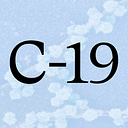When There’s Multiple Vaccines, Experts Say Vaccinate With What’s Available
Even if there’s varying effectiveness
The vaccine rollout is happening worldwide with varying degrees of logistical success. In the United States, the two vaccines currently approved for emergency use include one from Moderna and one from Pfizer-BioNTech, both with over 90% reported efficacy rates.
Other vaccines will likely soon be reviewed by the U.S. Food and Drug Administration (FDA) for possible emergency approval. They include a one-dose vaccine from Johnson & Johnson. At the moment, that vaccine is shown to be effective but not quite at the level reported by Moderna and Pfizer. However, Johnson & Johnson’s vaccine still looks good, experts say. While it’s 66% effective at preventing all symptoms, the data shared by the company suggests it is 85% effective at preventing severe symptoms.
Even so, the news has left some people wondering: If the vaccines available have different efficacy levels, does it change the way they are distributed?
Experts have been saying for a long time now that there are clear benefits to having the Johnson & Johnson vaccine as part of the arsenal, even if its effectiveness is not technically as high. One team of researchers argued that the first available vaccine should be used with a study published in January in the American Journal of Preventive Medicine. They developed a computational model that represented the U.S. population, Covid-19 coronavirus spread, and vaccines with different possible efficacies to prevent infection or reduce severe disease, and vaccination timings.
“We found that it’s better to vaccinate with a vaccine that may have a lower effectiveness earlier than wait for a vaccine with a higher effectiveness,” says study author Bruce Y. Lee, MD, MBA, executive director, Public Health Informatics, Computational, and Operations Research (PHICOR) and a professor at CUNY Graduate School of Public Health and Health Policy. “The longer you wait, the more difficult it is to control the virus.”
Except for an extremely limited number of situations — like, say, very early in a pandemic when the only vaccine available has under 35% efficacy — does it make sense to have a person wait to be vaccinated until there’s a more effective vaccine available, the study found. Waiting for more effective vaccines rather than using less effective vaccines that are available to distributors almost always results in more hospitalizations and higher medical costs and productivity losses, the authors report.
Lee also points out that Moderna and Pfizer have had some difficulty in keeping up with demand. The inclusion of a vaccine that’s easier to store and only requires one dose will be important to help alleviate those burdens.
“We found that there’s trade-off between timing and efficacy in a sense that, if all things are equal and you have two vaccines and one is more effective than the other, then, assuming that everything else is equal, people would naturally opt for the one that’s more effective,” says Lee. But in a situation where all vaccines available have good efficacy, and Covid-19 is spreading widely, the best way to ensure fewer casualties and costs is to use whatever vaccines are at hand. If a clinic has some doses of the Moderna vaccine and some doses of the Johnson & Johnson vaccine, they should use both that day.
“What you want to do is get people protected as quickly as possible, so the virus starts running out of places where it can spread,” says Lee.
Lee adds that people should also keep in mind that the reported efficacy numbers of the currently available vaccines have a lot of caveats. “For the Moderna and the Pfizer vaccines, that 90% efficacy was reported back in December. And if you think about it, those trials were started in July. So you’re basing your findings on going from July to approximately October, November or so.” Over the summer, transmission rates went down and during the last couple of months, transmission has increased. Johnson & Johnson’s vaccine was being tested during a somewhat different time frame, a time during which the risk of getting the virus may have been higher.
“If we have another vaccine that’s available, then it’s better to offer people protection rather than say, oh, come back later,” says Lee. Also, keep in mind, a vaccine like Johnson & Johnson’s that prevents severe illness from Covid-19 and only requires one dose can be a major step forward.
Agree? Disagree? Share your thoughts in the comments.

